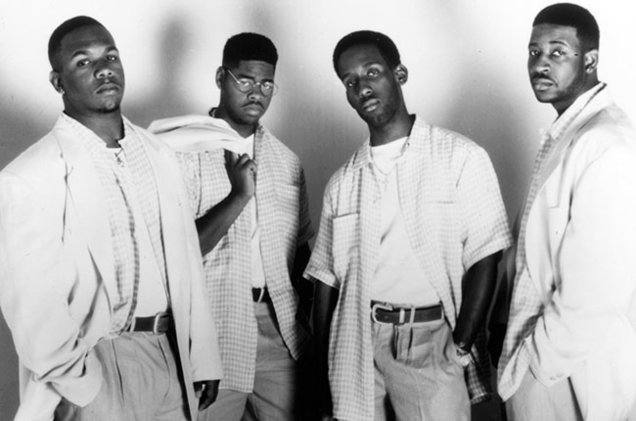Rhythm and Blues: Past, Present, Future

The musical genre of Rhythm and Blues, commonly referred to as “R&B”, has been a staple in Black American life for decades. The smooth melodies paired with rich, seductive lyrics gently whisper to the soul all that it’s longed for and all that it’s seen. You can’t doubt the beauty of the genre, and despite all the trials and tribulations it’s experienced, it is still standing in popularity. When you have a Black mom, you commonly hear the phrase, “This is what you call real music”, referring to the hip, sultry songs of yesterday. But like everything in life, things change, and the poetic soundwaves of R&B are no exception.
The Beginning of a musical genre
During the beginning of the 19th century, the relocation of African-Americans from the South to major industrial cities aided in the reconstruction of American culture. This era, known as The Great Migration, created a new market for the musical genres of jazz and blues. While the birth of the musical title “Rhythm and Blues” is debatable, the late Billboard magazine journalist and claimed “Godfather of R&B”, Jerry Wexler, is given credit for coining the term in 1948. The expression also replaced the term, “race music”, which was often used to label sounds created by Black artists but was deemed offensive after World War II. Despite the name change, during the beginning stages of R&B, only African-Americans were soaking up the rhythmic numbers due to sales and radio play only being localized in Black markets. However, when the fabulous ‘50s rolled around, more white teenagers became aware of the musical bracket which led to the genre’s takeoff.
The Golden Age
When R&B finally landed on its feet in the world of music, there was no stopping how far it could go. In 1959, Motown Records was founded and thus began the new era of music. The music of these days was so iconic, that when you heard the first 3 seconds, you automatically knew the song. For example, all you need to hear is the bass to know that the song is My Girl by The Temptations, or “A buh-buh buh buh” to get on your feet and chant ABC by the Jackson 5. The music of this time contained so much innocence and Black artists presented themselves as royalty.
Prime Time

“If the love doesn’t feel like 90’s R&B, I don’t want it” – said everyone.
When you hear older people talking about the “baby making music”, this is it. It was a time when no one sounded identical and lush whispers could take over the body and mind. From boy and girl groups to single acts with phenomenal voices, R&B contained diversity and innovative sounds that can never be duplicated. This era birthed artists such as Boyz II Men, Mariah Carey, TLC, Usher, Aaliyah which are some of the most legendary musical acts to ever be a part of music. Their sound, style, and reflection of love contributed to their mainstream popularity, not only upon the charts but in the homes of ordinary strangers hoping for a love like those on the records of their favorite artists. With hip-hop on the rise, artists began to merge the genres and create a completely new sound. For example, the late legend Aaliyah created hits like Try Again, Are You That Somebody, and One in a Million when partnered with GOATs Timbaland and Missy Elliot. Not only did hip-hop alter the sound of R&B, but it briefly took its place from 2005 – 2013.
Resurrection: 2010 And Beyond
Sometimes it feels like good music was a thing of the past. For a few years, R&B fell in popularity and was lacking new artists to give a fresh perspective. Thankfully, within the past few years, the emergence of several artists have brought taste back to the musical category. When you think of R&B artists nowadays, I’m sure SZA, Khalid, Kehlani, and Frank Ocean come to mind. These musicians have not only become the face of the genre but have assisted in the transformation of the sound. R&B is no longer reliant on upbeat tempos, song bridges, or music videos. It’s all about the vibe. Rather than a fluctuation of voice notes, authentic instrumentation, and powerful samples, today’s sound mainly relies on a monotone voice, steady beats, and the “Don’t label me” request.
Conclusion
There is no doubt that the division of R&B has changed. Just like hip-hop, rock, and pop, the sounds have evolved to be more accustomed to the newer generations. While instrumentation has been replaced by beats, and sexy, complex lyrics have become simple, the genre is still standing strong. After all, it was created by Black people. No matter how much the sound of rhythm and blues changes, it will always reflect the love, pain, and hope that we have experienced in life. Like the love spoken about on the cookout anthems and holiday house party favorites, the genre of R&B will never fade away.
Thank you for reading! Check out other pieces from this author.
The Future is Female: How Women are transforming the Music Industry







They have been criticized for exploiting the massive catalogue of African-American music, but it has also been noted that they both popularized that music, bringing it to British, world and in some cases American audiences, and helped to build the reputation of existing and past rhythm and blues artists.